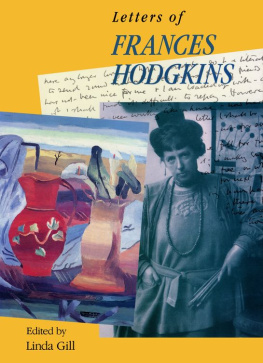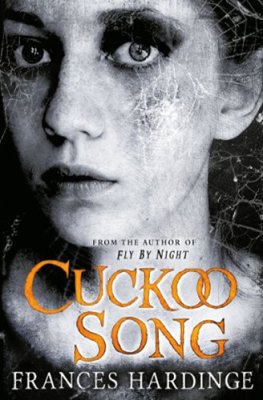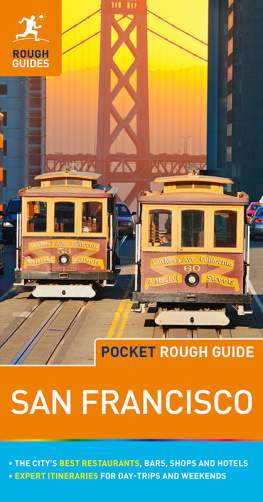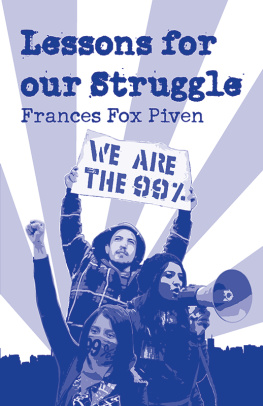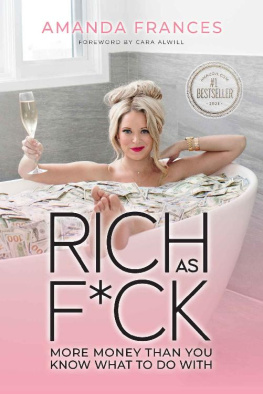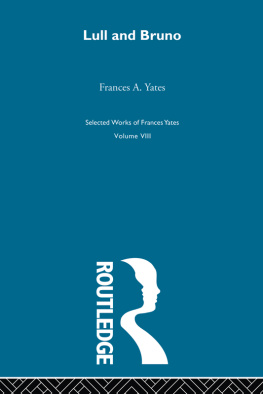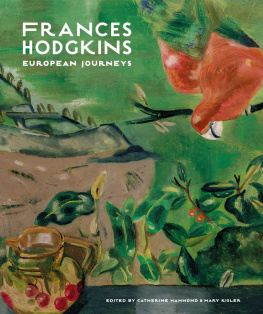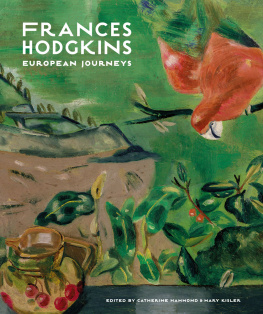Frances Hodgkins (editor) - Letters of Frances Hodgkins
Here you can read online Frances Hodgkins (editor) - Letters of Frances Hodgkins full text of the book (entire story) in english for free. Download pdf and epub, get meaning, cover and reviews about this ebook. year: 2012, publisher: Auckland University Press, genre: Non-fiction. Description of the work, (preface) as well as reviews are available. Best literature library LitArk.com created for fans of good reading and offers a wide selection of genres:
Romance novel
Science fiction
Adventure
Detective
Science
History
Home and family
Prose
Art
Politics
Computer
Non-fiction
Religion
Business
Children
Humor
Choose a favorite category and find really read worthwhile books. Enjoy immersion in the world of imagination, feel the emotions of the characters or learn something new for yourself, make an fascinating discovery.
- Book:Letters of Frances Hodgkins
- Author:
- Publisher:Auckland University Press
- Genre:
- Year:2012
- Rating:3 / 5
- Favourites:Add to favourites
- Your mark:
- 60
- 1
- 2
- 3
- 4
- 5
Letters of Frances Hodgkins: summary, description and annotation
We offer to read an annotation, description, summary or preface (depends on what the author of the book "Letters of Frances Hodgkins" wrote himself). If you haven't found the necessary information about the book — write in the comments, we will try to find it.
Letters of Frances Hodgkins — read online for free the complete book (whole text) full work
Below is the text of the book, divided by pages. System saving the place of the last page read, allows you to conveniently read the book "Letters of Frances Hodgkins" online for free, without having to search again every time where you left off. Put a bookmark, and you can go to the page where you finished reading at any time.
Font size:
Interval:
Bookmark:
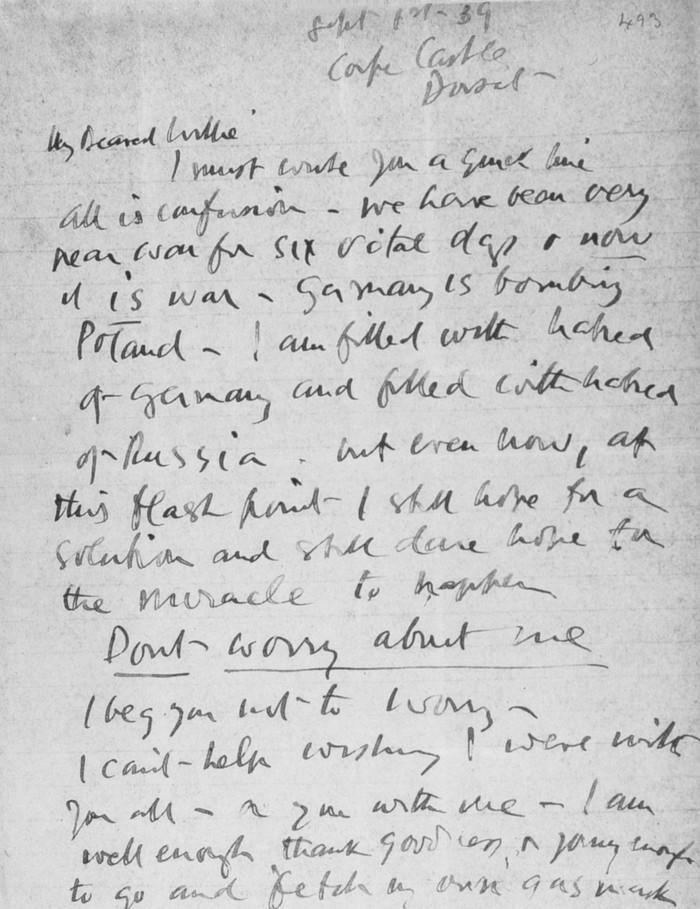
Letter to William Hodgkins, 1 September 1939 (Letter 495).
To E. H. McCormick
As in mountaineering so in art there is only a very narrow edge of safety on which we can walk.
Letter from Frances Hodgkins to Jane Saunders, September 1924
The art historian may sometimes regret that Vasari did not give us more of the aesthetics of his time; but Vasari knew his business, knew, perhaps, that the aesthetics of an age are quickly superseded but that the human document remains of perennial interest to mankind.
Roger Fry, VisionandDesign
In preparing this book, I am indebted in every possible way to Dr E. H. McCormick. He gave me dated transcriptions of the letters of Frances Hodgkins, additional information and photographs, a treasure trove of material representing years of research. Though I have had the pleasure of his friendship while working on the manuscript and have been guided by the example of his scholarly dedication, Dr McCormick carries no responsibility for the use I have made of his gifts. He has refrained from advice and enquiry and left me free to make my own decisions.
The late Peter Field, nephew of Frances Hodgkins and trustee of her estate, gave me permission to publish the letters, which are still under copyright. I am most grateful to him and his wife Dorothy for their generosity and encouragement.
Jim Traue of the Turnbull Library and his successor Margaret Calder supported the publication and I have appreciated the help of David Colquhoun, David Retter and Penelope Feltham of the Manuscripts and Archives Section. I am also grateful for assistance from: Ron Brownson (Auckland City Art Gallery), Rosemary Entwisle and Peter Miller (Hocken Library), Oliver Stead (Dunedin Public Art Gallery), Jennifer Booth and Susan Breakell (Tate Gallery Archive). Dr Francis Pound, Priscilla Pitts and Alexa Johnston made suggestions about the introduction, as did Gretchen Albrecht, whose comments on early drafts of the manuscript were invaluable. Iain Buchanan drew my attention to an important letter in the Art Gallery of New South Wales. For various combinations of information, friendship and hospitality I would like to thank: the late Sir Colin Allan, Maurice and Beverley Allen, Dr Roger Collins, Jetta and Bruce Cornish, Elizabeth Eastmond, Sarah Hillary, Bill and Marjorie Hursthouse, Louis Johnston, Roberta and Brian McKeon, James Ross, Peter Scholes and Elizabeth Steiner.
From the beginning I have been sustained by the enthusiasm and advice of Elizabeth Caffin of Auckland University Press and, more recently, by similar encouragement and assistance from Dennis McEldowney.
I gratefully acknowledge the generous assistance of the Literature Programme of the Queen Elizabeth II Arts Council.
To my husband Mike, my thanks for much material help as well as the greater kindness of being a patient listener.
The extant letters of Frances Hodgkins contain over half a million words. The informal nature of the letters contributed to the decision to publish a selection rather than a complete edition of this extensive correspondence. Comments and enquiries about friends and relations, the chronicling of small daily events (often the most engaging parts of a letter for its recipient) diminish in interest the further a reader is removed in time and kinship. The flavour of these exchanges may be adequately conveyed by samples. Sometimes FH passed swiftly from one subject to another and some of those fragments may be omitted without misrepresenting her style. At other times she dwelt repetitively on one topic and again little violence is done if the discussion is condensed.
The outstanding quality of these letters is their completeness as a record of a life and the selection has been made with a view to retaining that quality. Of the 992 surviving letters 616 have been selected, and nearly all of these have been abridged. Overall, the correspondence has been reduced by half. I was concerned to show FH at her best as a letter-writer but not at the expense of biographical information, especially where that was relevant to her development as an artist. Footnotes have been kept to a minimum; artists mentioned by FH are briefly identified if they are not well known or if their life and work had some bearing on what she was doing at the time.
FHs letters are visually interesting documents, expressive in ways that are lost when they are rendered in print. Her handwriting has something of the calligraphic variety of her paint strokes and is a supple instrument for revealing mood. The relation between word and space is also eloquent: the length of the gaps between words may vary, suggesting pauses, the lines of writing may run almost diagonally across the page, the final sentences wind round the margins of preceding pages. There has been no attempt, beyond this brief note and one or two comments later, to indicate idiosyncrasies of this kind. Other idiosyncrasies have been retained: FHs abbreviations; her casual use of apostrophes; her paragraphing; her varying ways of writing the date. Most inconsistencies in spelling, including that of names, have been left without comment. Some errors have been silently corrected: those that were obviously the result of a momentary lapse or, very occasionally, where too pedantic an insistence on fidelity might interrupt the larger truth of a passage, introducing, for example, a touch of humour into what was deeply felt by the writer.
I have taken some small liberties with punctuation, especially in the later letters. As time went by, FHs punctuation was increasingly reduced to the dash, varying in length from a flick to an emphatic line more than two centimetres long. Even her question marks regularly have dashes as their base. I have interpreted some of these dashes as full stops. I have also supplied full stops and the occasional comma when lack of punctuation seemed inadvertent and prevented fluent reading. I have standardised the punctuation of the addresses and completed brackets and quotation marks.
Square brackets indicate material supplied editorially within the letter. Ellipses, never used by FH herself, indicate omitted material, three stops for a passage between the beginning and end of a sentence, four stops . for a longer omission.
Sourcesoftheletters
Nearly all the letters of Frances Hodgkins, either the original documents, photocopies or transcriptions, are lodged in the Alexander Turnbull Library, Wellington. The editor and publishers gratefully acknowledge the librarys permission to publish this selection.
Grateful acknowledgement is also made to: Maurice and Beverley Allen (David Brynley), the Art Gallery of New South Wales (H. V. F. Mann), The Lefevre Gallery (Dr Honeyman, Duncan Macdonald, A. J. McNeill Reid), the Sarjeant Gallery (Edith Collier), the Tate Gallery (Jane Saunders, Arthur Howell, Arthur Lett Haines). The letters to Karl Hagedorn and some to Eardley Knollys were collected and transcribed by Peter Millard.
I do so enjoy your letters, wrote Dorothy Kate Richmond to Frances Hodgkins when the two women were in Europe in 1903. You write in the same style as you paint, with brilliant patches of colour and any amount of snap and go.
Over sixty years later Katharine West, another close friend, spoke of the pleasure Frances Hodgkinss letters had given her in the 1940s: Most painters write well . The whole person comes in the paintings and in the writing and this is particularly true of Frances . Her letters were an absolutely spontaneous outpouring of the person she was.
Font size:
Interval:
Bookmark:
Similar books «Letters of Frances Hodgkins»
Look at similar books to Letters of Frances Hodgkins. We have selected literature similar in name and meaning in the hope of providing readers with more options to find new, interesting, not yet read works.
Discussion, reviews of the book Letters of Frances Hodgkins and just readers' own opinions. Leave your comments, write what you think about the work, its meaning or the main characters. Specify what exactly you liked and what you didn't like, and why you think so.

